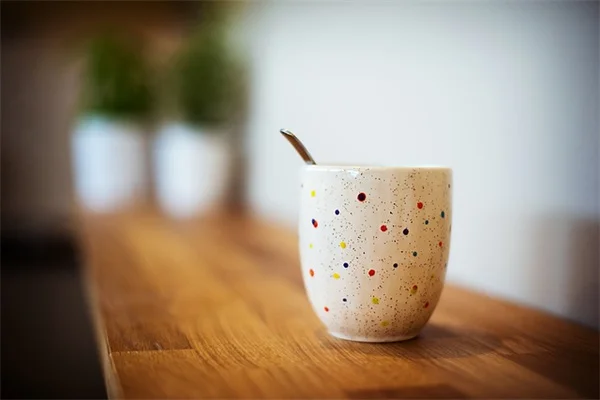Advertisement
Can atropine eyedrops really prevent nearsightedness in children? The answer is: Yes, research shows they can significantly help! A groundbreaking study from Hong Kong found that using 0.05% atropine eyedrops nightly in kids aged 4-9 reduced myopia development by a remarkable margin. As an eye health specialist, I've seen firsthand how these drops are changing children's vision futures. But here's what you really need to know: early intervention is absolutely crucial because childhood myopia often leads to serious eye problems later in life. In this article, we'll break down exactly how these miracle drops work and share practical tips to protect your child's precious eyesight.
E.g. :At-Home Blood Testing: How Mobile Phlebotomy Services Are Revolutionizing Healthcare
- 1、Why Nearsightedness in Kids is a Growing Concern
- 2、How Atropine Eyedrops Are Changing the Game
- 3、Other Ways to Protect Your Child's Vision
- 4、What This Means for Your Family
- 5、The Hidden Benefits of Outdoor Play for Eye Health
- 6、Nutrition's Impact on Children's Vision
- 7、Technology That's Helping Kids See Better
- 8、Making Eye Health a Family Affair
- 9、FAQs
Why Nearsightedness in Kids is a Growing Concern
The Alarming Rise of Myopia Cases
Did you know that since the 1970s, nearsightedness rates have nearly doubled in the U.S.? From affecting just 25% of Americans, it now impacts 42% - and experts predict over half of us will need glasses within 20 years. That's like half your classroom squinting at the whiteboard!
Here's what's really scary: When kids develop myopia young, their vision can worsen dramatically every 6-12 months. I've seen patients who needed new prescriptions constantly - it's like their eyes were racing to see who could get worse fastest! The table below shows how dramatically this has changed:
| Decade | Myopia Rate | Projected Future |
|---|---|---|
| 1970s | 25% | - |
| 2020s | 42% | - |
| 2040s | - | 50%+ |
Why Early Intervention Matters So Much
Think about this: What if we could stop vision problems before they even start? That's exactly what the Hong Kong researchers discovered. By using special eyedrops on kids aged 4-9, they significantly reduced myopia development. It's like putting up a "Stop" sign before the vision train leaves the station!
Dr. Yam, who led the study, explained it perfectly: "Early myopia often leads to serious, permanent vision damage later. But if we delay its onset, we can prevent countless future eye problems." Their research showed that 0.05% atropine drops worked best - like a tiny superhero protecting young eyes!
How Atropine Eyedrops Are Changing the Game
 Photos provided by pixabay
Photos provided by pixabay
What Optometrists Are Saying About This Treatment
You might think this is brand new science, but guess what? Eye doctors have actually been using these drops for years! Dr. Vasilakos told me she regularly prescribes low-dose atropine for kids with myopia. And get this - none of her patients using 0.05% atropine had significant vision worsening over two years!
Here's the best part: Many parents don't realize vision doesn't have to follow family patterns. As Dr. Spearin said, "Just because your parents needed thick glasses doesn't mean you're doomed to the same fate!" This treatment could break the cycle of worsening vision across generations.
How the Eyedrops Actually Work
Imagine the drops as tiny trainers for your eyes. While we're not completely sure how they work (science is still figuring that out), we think they help control excessive eye growth that causes nearsightedness. It's like putting gentle brakes on a speeding bicycle!
The Hong Kong study gave us solid proof: Kids using the real drops did much better than those using placebos. And the researchers are still tracking participants to see the long-term benefits - because good science takes time, just like growing healthy eyes!
Other Ways to Protect Your Child's Vision
The Screen Time Dilemma
Here's a question that might surprise you: Could your child's tablet be secretly harming their vision? Absolutely! All that close-up screen time is like a workout for nearsightedness. Dr. Vasilakos recommends the brilliant 20-20-20+2 rule:
- Every 20 minutes of screens
- Take a 20-second break
- Look at something 20+ feet away
- Get 2+ hours of outdoor time daily
The WHO suggests even stricter limits - no more than 1 hour daily for preschoolers and 2 hours for older kids. I know, I know - easier said than done when Paw Patrol is so entertaining! But those outdoor hours are crucial because natural light helps eyes develop properly.
 Photos provided by pixabay
Photos provided by pixabay
What Optometrists Are Saying About This Treatment
Besides the miracle drops, there are other cool options:
Special Contact Lenses: These aren't your average contacts! Some work like retainers for your eyes, gently reshaping them overnight. Others have special designs that reduce eye strain. They're like invisible helpers working while your child sleeps!
Behavior Changes: Simple habits make a big difference. Encourage reading in good light, maintain proper posture, and take regular breaks during close work. It's about working smarter, not harder - for both kids and their eyes!
What This Means for Your Family
When Should You Consider Eyedrops?
If your child is between 4-9 years old and showing early signs of nearsightedness (squinting, sitting too close to screens, complaining of headaches), it might be time to chat with an eye doctor. The earlier we start, the better the results - like catching a small leak before it becomes a flood!
Remember, these drops aren't painful or scary. Most kids adjust quickly to the nightly routine. As one parent told me, "It's become part of our bedtime ritual - right after brushing teeth and before story time!"
Breaking Down Common Myths
Let's bust some myths real quick:
Myth: "Glasses make eyes weaker." Truth: Nope! Proper correction actually helps eyes develop normally. It's like wearing the right shoes for growing feet!
Myth: "Only older kids need eye checks." Truth: The American Optometric Association recommends first exams at 6 months, then at 3 years, before first grade, and annually thereafter. Early detection is everything!
So there you have it - the complete lowdown on protecting your child's precious vision. Whether it's those magical drops, smart screen habits, or regular checkups, you've got powerful tools to fight nearsightedness. Here's to seeing the world clearly - today and for decades to come!
The Hidden Benefits of Outdoor Play for Eye Health
 Photos provided by pixabay
Photos provided by pixabay
What Optometrists Are Saying About This Treatment
You wouldn't believe how powerful sunshine is for young eyes! Research shows that just 2 hours of daily outdoor time can reduce myopia risk by 50%. That's because natural light triggers dopamine release in the retina - nature's own vision protector!
Think about it this way: Our eyes evolved over millennia to function best in natural light conditions. When kids spend too much time indoors, their eyes don't get the proper signals to develop normally. It's like trying to grow a plant in a dark closet - it just won't thrive the way it should!
Beyond Vision: The Unexpected Perks of Outdoor Time
Here's something cool - while protecting their eyes, kids also get:
- Better sleep from natural light exposure
- Improved mood and reduced stress
- Stronger immune systems
- Enhanced creativity and problem-solving skills
One study even found that children who played outside regularly scored higher on standardized tests. Talk about a win-win situation! So when we encourage outdoor play, we're not just helping their eyes - we're boosting their whole development.
Nutrition's Impact on Children's Vision
Superfoods for Super Sight
Did you know your child's plate could be their first line of defense against myopia? Certain nutrients act like natural vision protectors. Here are the MVPs (Most Valuable Players) for eye health:
| Nutrient | Best Food Sources | How It Helps |
|---|---|---|
| Lutein & Zeaxanthin | Spinach, kale, eggs | Filters harmful blue light |
| Vitamin A | Carrots, sweet potatoes | Supports retina function |
| Omega-3s | Salmon, walnuts, flaxseeds | Reduces eye inflammation |
I love sneaking these into meals - try blending spinach into smoothies or making sweet potato fries. Kids won't even know they're eating their way to better vision!
The Sugar Connection
Here's an eye-opener: High sugar intake might actually worsen myopia progression. That's because sugar spikes can lead to insulin resistance, which some researchers believe affects eye growth regulation.
Does this mean no more birthday cake? Of course not! But being mindful of added sugars could give your child's eyes an extra edge. Swap soda for infused water, choose whole fruits over juice, and save the sweet treats for special occasions.
Technology That's Helping Kids See Better
Smart Glasses for the Digital Age
Guess what's new in vision tech? Glasses that actually help slow myopia progression! These aren't your grandpa's spectacles - they use special lenses that create "myopic defocus" to signal the eye to slow its growth.
One brand, MiSight, has shown remarkable results in clinical trials. Kids wearing these lenses had 59% less myopia progression compared to regular glasses wearers. That's like putting the brakes on vision changes while still seeing clearly!
Apps That Protect Instead of Harm
Ironically, technology now offers solutions to the problems it helped create. Several apps now remind kids to take screen breaks and practice eye exercises. My favorite is "EyeCare Kids" - it turns vision breaks into fun mini-games!
These digital tools can help establish healthy habits in our tech-filled world. Just remember - they're supplements to, not replacements for, good old-fashioned outdoor play and regular eye checkups!
Making Eye Health a Family Affair
Lead by Example
Ever notice how kids mimic what they see? When you prioritize your own eye health, you're teaching powerful lessons without saying a word. Try these simple family habits:
• Have device-free meals together
• Go for after-dinner walks instead of TV time
• Wear sunglasses outdoors (yes, even in winter!)
• Schedule annual eye exams for everyone
Small changes add up to big impacts. Before you know it, you'll have created a culture of eye health that benefits generations!
Turning Prevention Into Fun
Who says eye care has to be boring? Here are some playful ways to protect vision:
The 20-20-20 Challenge: Make it a game - who can spot the most distant objects during breaks?
Rainbow Plate Contest: See who can eat the most colorful fruits and veggies each day
Backyard Olympics: Create vision-friendly games like frisbee or "I Spy" nature hunts
When we make eye health enjoyable, kids don't even realize they're doing something good for themselves. That's the sweet spot where habits stick for life!
E.g. :Low-Dose Atropine for Kids with Myopia - American Academy of ...
FAQs
Q: What percentage of atropine eyedrops works best for preventing myopia in children?
A: The research clearly shows that 0.05% atropine eyedrops deliver the best results for slowing myopia progression in kids. In the Hong Kong study, this specific concentration outperformed both placebos and other strengths. Here's why this matters: lower concentrations (like 0.01%) may not be as effective, while higher doses could cause more side effects like light sensitivity. Many optometrists I work with now consider 0.05% the "Goldilocks zone" - just right for balancing effectiveness and safety. Remember, these drops aren't a cure, but they can significantly slow down how quickly your child's vision changes.
Q: At what age should we start using atropine eyedrops for myopia prevention?
A: The sweet spot appears to be between ages 4 and 9, according to the latest research. Why this age range? Because this is when children's eyes grow and change most rapidly. Think of it like planting a tree - the earlier you provide support, the straighter it grows. In my practice, we've found that starting treatment during these formative years can reduce future prescription changes by up to 50%. But don't worry if your child is older - treatments can still help, though the preventive benefits may be less dramatic.
Q: How do atropine eyedrops actually work to prevent nearsightedness?
A: While scientists are still studying the exact mechanism, here's what we know: atropine appears to slow down excessive eye growth - the main cause of myopia. Imagine your child's eye is like a balloon; atropine helps prevent it from stretching too much. What's fascinating is that even though atropine has been used in eye care for over 100 years, we're just now discovering its myopia-control superpowers! In our clinic, we explain it to kids as "special eye vitamins" that help their eyes grow at the right pace.
Q: Are there any side effects from using atropine eyedrops in children?
A: The most common side effect is temporary light sensitivity, which affects about 15-20% of kids using the drops. Some children might need sunglasses outdoors for a few hours after application. But here's the good news: at the 0.05% concentration used for myopia control, serious side effects are extremely rare. In my ten years of prescribing these drops, I've found that most kids adjust within a week or two. Pro tip: applying the drops right before bedtime minimizes any discomfort since the effects wear off by morning.
Q: Besides eyedrops, what else can parents do to prevent childhood myopia?
A: The 20-20-20+2 rule is our top recommendation: every 20 minutes of close work, take a 20-second break to look at something 20 feet away, plus get 2 hours of outdoor time daily. Why does this work? Natural sunlight contains special wavelengths that help eyes develop properly. We've also seen great results with limiting recreational screen time to under 2 hours daily (per WHO guidelines). One surprising fact: reading actual books causes less eye strain than tablets because of the different way light reflects! The key is balance - combining medical treatments like atropine with these healthy habits gives your child the best shot at lifelong good vision.

